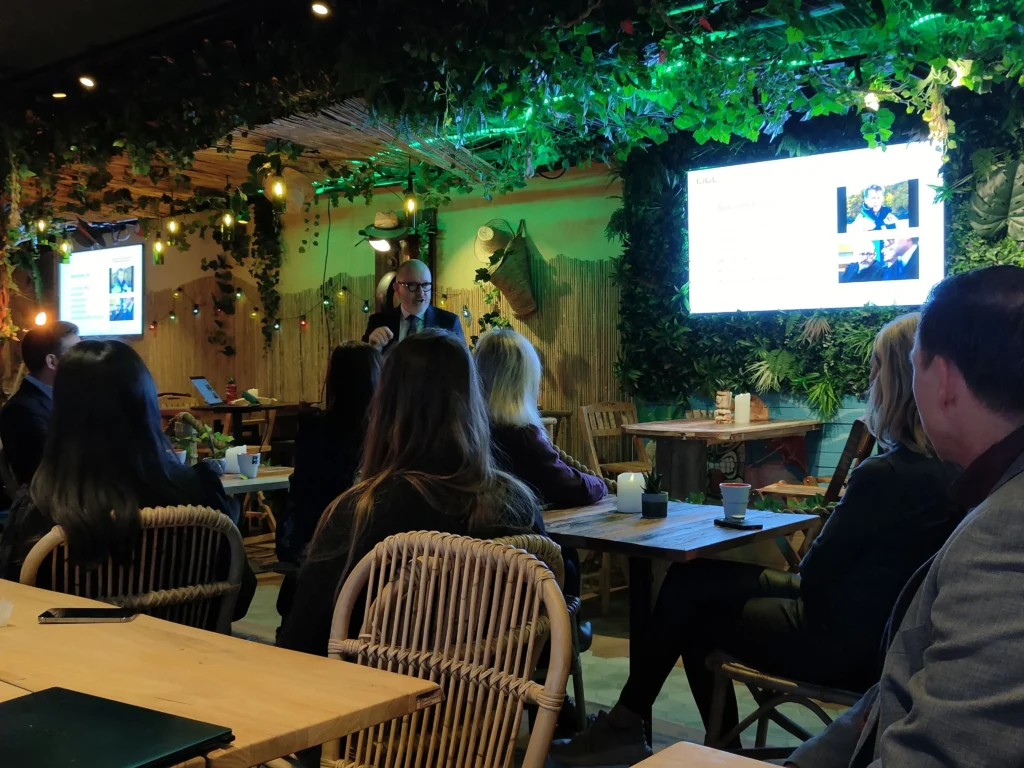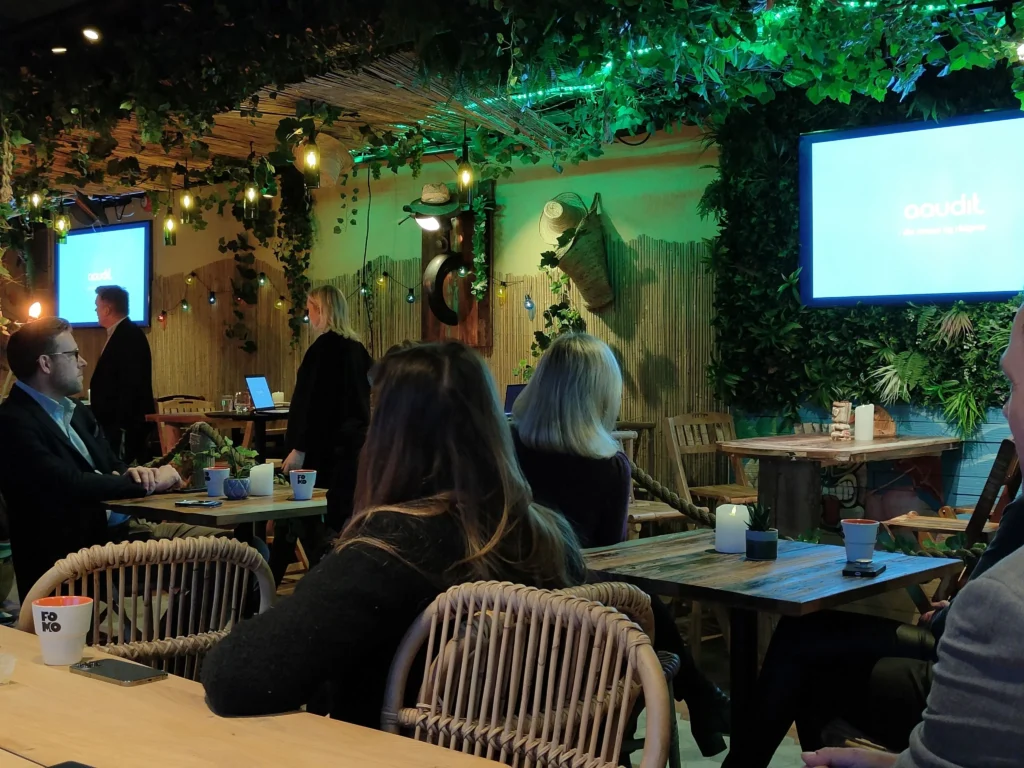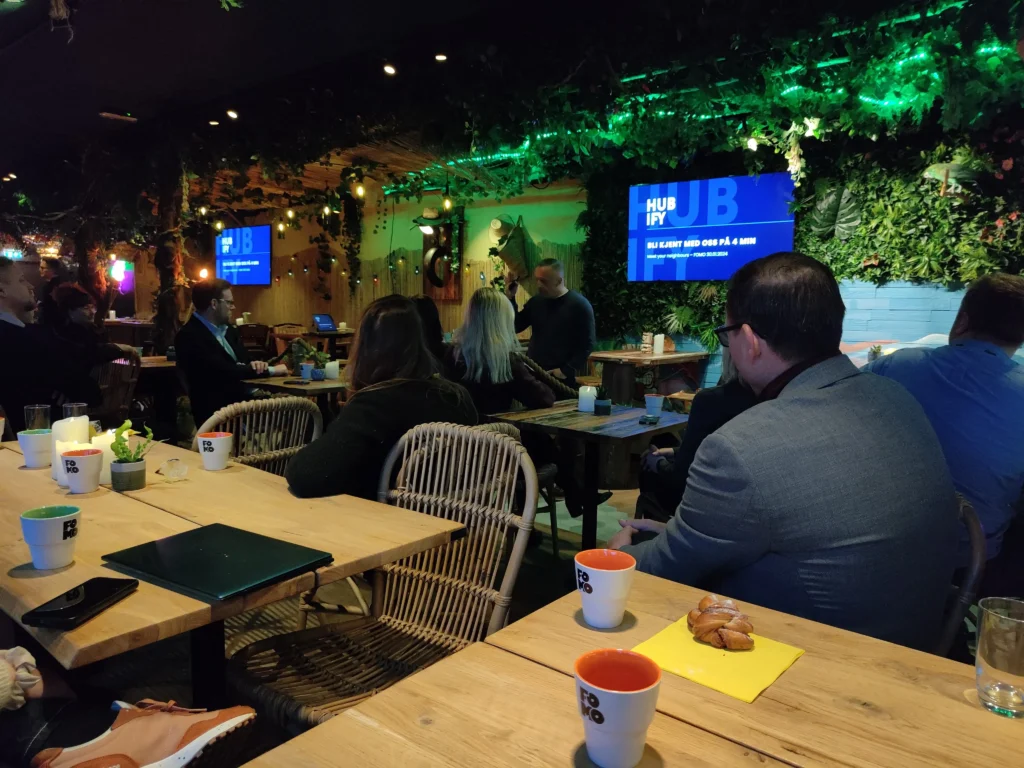As an introvert, the thought of mingling in a crowd, even a small one, often feels daunting. The idea of initiating conversations, making small talk, and introducing myself to strangers isn’t something that comes naturally to me. But a few days ago, I challenged myself by attending “Meet Your Neighbours” at FOMO in Stavanger (where I live).
This event was a gathering of around 30 local professionals, convened for just an hour over a casual cup of coffee. Despite my initial apprehensions, the intimate setting and the relaxed atmosphere made it surprisingly manageable, even for someone as introverted as myself.

I dunno why – maybe the previous night was particularly resting – but attending the small event helped me understand the purpose of such small, local networking events.
Inspired by this experience, I’ve decided to pen down my thoughts and share some insights on how such events can be a game-changer for businesses looking to grow.
What are local networking events?
Local networking events, in their essence, are gatherings designed to bring together professionals, entrepreneurs, and business owners within a specific locality or community. These events can vary in format, ranging from informal meetups like coffee mornings to more structured networking sessions. The key characteristic that defines them is their focus on fostering connections within a local setting.
The concept of local networking is grounded in the idea of building a close-knit business community. Unlike large-scale conferences or industry-wide events, these local gatherings offer a more intimate and approachable environment. This setting is particularly conducive for meaningful dialogues and the development of genuine relationships. It’s about creating a space where professionals can meet, share ideas, and explore potential collaborations in a more relaxed and personal atmosphere.
How to benefit from these events?
As I walked into “Meet Your Neighbours” at FOMO, the air buzzed with the energy of local professionals and entrepreneurs eager to connect or already knowing each other.
This event served as a perfect example of how small, local networking events can foster significant business relationships. Among the attendees, three companies (LIGL, Aaudit and Hubify) stood out for their presentations. My Norwegian language skill staging between poor and medium. I’m not sure I’ve understood everything but the three of them followed the same global approach: a quick pitch, a video advertisement and explaining what they’re doing.
Can we do better, for… let’s say a 10 minutes presentation?
Creating an effective 10-minute networking presentation requires a blend of clear messaging, audience engagement, and strategic content delivery. Here are the top five steps I would have used to make my presentation stand out and resonate with my local audience:
Start with a Strong Opening
The opening of your presentation is crucial as it sets the tone and engages your audience from the outset. Here’s how to make the most of it:
- Hook Your Audience: his is about grabbing attention immediately. Begin with an intriguing question, a surprising fact, or a brief story that relates to your business. This grabs attention and sets the tone for what’s to follow. For instance, if you’re in the tech industry, a startling fact about recent technological advancements or how technology impacts daily life could be a great opener.
- Introduce Yourself and Your Business: Concisely introduce who you are and what your business does. This should be clear, brief, and memorable. Avoid jargon and complex language; the key is to be clear and relatable. For example, instead of saying, “We specialize in advanced CRM solutions leveraging AI” you might say, “We help businesses like yours manage customer relationships more effectively, using smart technology to make your job easier.”

Define the Problem and Your Solution
This section is pivotal as it directly addresses why your audience should care about what you have to offer. It’s about connecting your business to a need or challenge they may face.
- Highlight a Common Problem: Clearly identify a problem or challenge that your business addresses. Make it relatable to ensure the audience sees the relevance. The key here is empathy – showing that you understand their challenges.
- Present Your Solution: Explain how your product or service solves this problem. Be specific about your unique approach or value proposition. Be clear about how it addresses the specific issues you’ve mentioned. This is where you differentiate yourself. Explain what sets your solution apart from others in the market. It’s not just about listing features; it’s about highlighting benefits.
Showcase Success Stories
- Use Real Examples: Incorporating a success story or case study in your presentation can powerfully demonstrate the value of your product or service. Choose an example that’s relatable to your audience and showcases a clear before-and-after scenario.
Even if I’ve witnessed some really quick examples given this morning by the three pitching companies, I’d rather…
- Include visuals: Use engaging visuals or brief video clips to support your story, making it more engaging and easier to understand.
- Include data: Just share the name of the companies you helped! Show how they “increased their ROI of 47%” or “reduced their operation costs by 55%” thanks to you!

Engage the Audience
- Ask Questions: Engaging your audience is crucial, especially in a short presentation. Pose a question related to their experiences with the problem you’re addressing. This not only keeps them away from their smartphones 🙂 but also makes your presentation more interactive and less of a monologue.
- Live Demonstration: If applicable, performing a brief live demo of your product or service can be highly impactful. It allows the audience to see your solution in action. Ensure that this demo is well-rehearsed and failsafe to avoid any technical glitches.
Conclude with a Strong CTA
This is something I’ve not seen enough during the event but a strong Call-To-Action is a MUST:
- Clearing Next Steps: What do you want the audience to do next? It could be visiting your website, come visit your office or grab a coffee… (coffee is really a “norwegian thing”).
- Provide Contact Information: Display your contact information prominently in your final slide. Encourage the audience to reach out with any questions or to learn more about your services.
- Leave Room for Follow-Up: Mention that you’re open to discussions post-presentation. This can encourage one-on-one interactions with interested parties who might want more detailed information or have specific queries.
Before wrapping up, I want to emphasize the importance of preparation. Practicing and timing your presentation is crucial. This ensures that you confidently deliver your content within the allotted time, covering all key points without rushing. It’s a strategy I found particularly useful, allowing me to present my ideas coherently and effectively.
The approach I’ve just shared about is not just theoretical for me; they were practical steps I witnessed and applied in real time myself. It works!
Looking forward, I am genuinely excited about attending more such events. It has not only helped me step out of my comfort zone but also made me think back on the potential these local networking events hold.

Comments